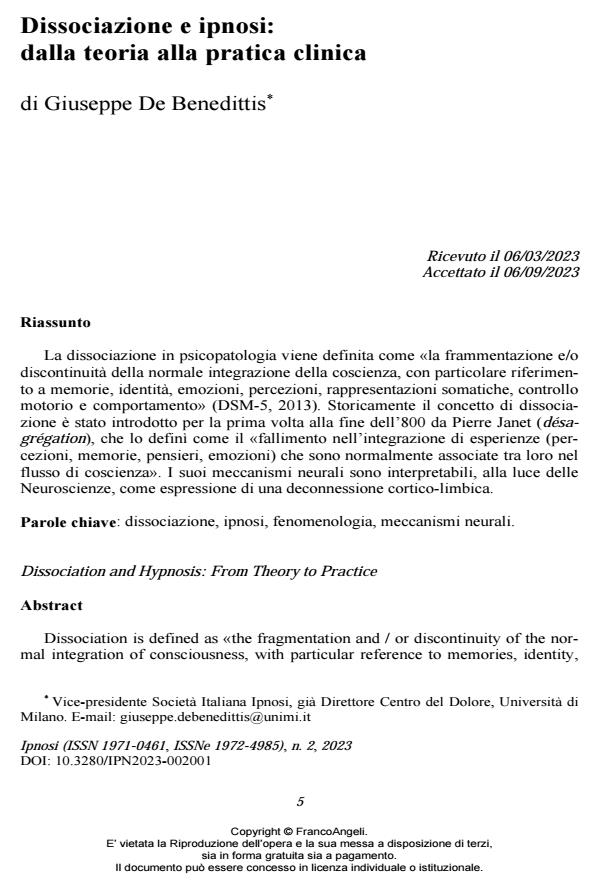Dissociazione e ipnosi: dalla teoria alla pratica clinica
Titolo Rivista IPNOSI
Autori/Curatori Giuseppe De Benedittis
Anno di pubblicazione 2024 Fascicolo 2023/2
Lingua Italiano Numero pagine 27 P. 5-31 Dimensione file 392 KB
DOI 10.3280/IPN2023-002001
Il DOI è il codice a barre della proprietà intellettuale: per saperne di più
clicca qui
Qui sotto puoi vedere in anteprima la prima pagina di questo articolo.
Se questo articolo ti interessa, lo puoi acquistare (e scaricare in formato pdf) seguendo le facili indicazioni per acquistare il download credit. Acquista Download Credits per scaricare questo Articolo in formato PDF

FrancoAngeli è membro della Publishers International Linking Association, Inc (PILA)associazione indipendente e non profit per facilitare (attraverso i servizi tecnologici implementati da CrossRef.org) l’accesso degli studiosi ai contenuti digitali nelle pubblicazioni professionali e scientifiche
La dissociazione in psicopatologia viene definita come «la frammentazione e/o discontinuità della normale integrazione della coscienza, con particolare riferimento a memorie, identità, emozioni, percezioni, rappresentazioni soma-tiche, controllo motorio e comportamento» (DSM-5, 2013). Storicamente il concetto di dissociazione è stato introdotto per la prima volta alla fine dell’800 da Pierre Janet (désagrégation), che lo definì come il «fallimento nell’integrazione di esperienze (percezioni, memorie, pensieri, emozioni) che sono normalmente associate tra loro nel flusso di coscienza». I suoi meccani-smi neurali sono interpretabili, alla luce delle Neuroscienze, come espressione di una deconnessione cortico-limbica.
Parole chiave:dissociazione, ipnosi, fenomenologia, meccanismi neurali.
- I fenomeni ipnotici nel trattamento del disturbo sessuale della penetrazione Ilaria Genovesi, Luca Bidogia, Carlotta Di Giusto, in IPNOSI 1/2025 pp.49
DOI: 10.3280/IPN2025-001004
Giuseppe De Benedittis, Dissociazione e ipnosi: dalla teoria alla pratica clinica in "IPNOSI" 2/2023, pp 5-31, DOI: 10.3280/IPN2023-002001